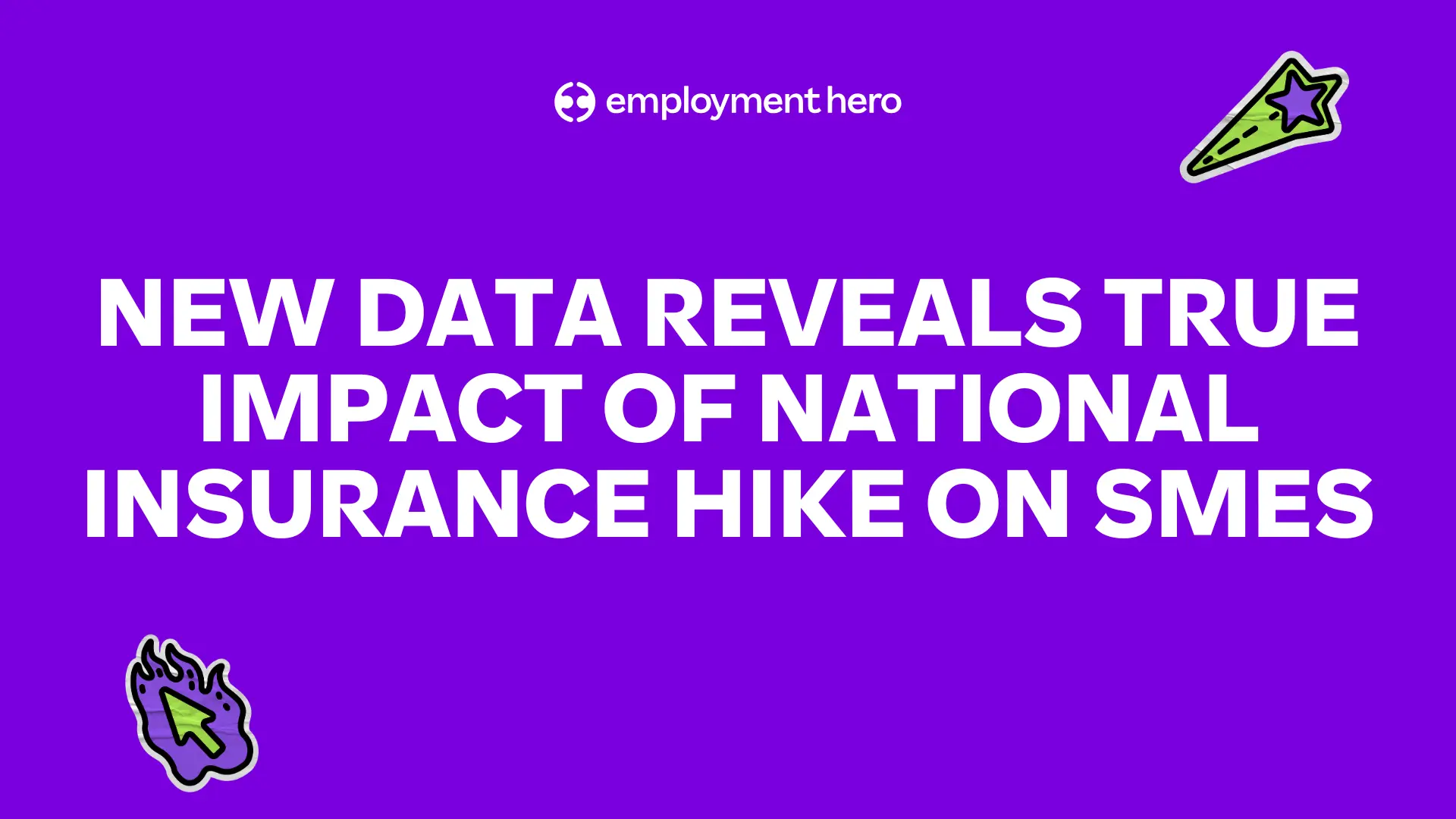The Bradford Factor Explained: Assessing the Impact of Employee Absence on your Business
Managing absence in the workplace can be challenging, especially when it comes to spotting patterns that might affect productivity. The Bradford Factor is widely used within businesses as part of their HR toolkit for tracking short-term absenteeism.

Managing absence in the workplace can be challenging, especially when it comes to spotting patterns that might affect productivity. The Bradford Factor is widely used within businesses as part of their HR toolkit for tracking short-term absenteeism.
Here, we’ll break down what the Bradford Factor is, how it works and how to use it effectively without losing the human side of your people management.
What is the Bradford Factor?
The Bradford Factor is a scoring system used within HR functions to monitor employee absence. It primarily focuses on short, frequent and unplanned absences, rather than long-term sick leave.
The idea behind this method is quite simple. Unplanned, repeat absences tend to be more disruptive to a business than longer periods of absence that are taken less frequently. It helps businesses spot trends in short-term absence, address potential issues early and apply absence policies more consistently. It’s most often used as a flagging tool for HR reviews, particularly in larger teams where absence data can be difficult to monitor manually.
How the Bradford Factor is calculated
The Bradford Factor is calculated with a simple mathematical formula:
S x S x D = B
Where:
- B is the Bradford Factor score.
- S is the number of spells (or instances) of absence in a set period.
- D is the total number of days of absence in that same period.
Here’s an example of how to calculate a Bradford Factor score.
Employee A who was absent for 10 days over the course of a 52-week period, that occurred all at once, would have a total number of absent days of 10 in the past 12 months.
So, the Bradford Factor would be (1 x 1) x 10 = 10.
Employee B who is absent twice in one year, for five days at a time over the last 12 months, would still have a total number of absent days of 10, but because they occurred across two different periods, they would have a higher score.
So, the Bradford Factor would be (2 x 2) x 10 = 40.
Employee C who has been absent for the same total number of days (10), but those absences have occurred one day at a time, their Bradford Score would be much, much higher.
So, the Bradford Factor would be (10 x 10) x 10 = 1,000.
Interpreting the Bradford Factor score
Having a strong understanding of what each score means in terms of absences is vital. Generally speaking, the higher the score the more frequent and disruptive the absence.
| Bradford score | What it may indicate |
| 0-49 | Low concern |
| 50-124 | Could warrant informal monitoring |
| 125-399 | May prompt a formal HR review |
| 400+ | High concern, often used in disciplinary triggers |
These thresholds can vary depending on your business policy as custom limits can be introduced based on operational needs or industry standards.
Benefits of using the Bradford scoring system
When applied correctly, the Bradford scoring system can be a valuable tool for employers and HR teams. It allows businesses to:
- Identify short-term absence trends quickly.
- Ensure consistent policy enforcement.
- Support fairer conversations about attendance.
- Improve workforce planning and team coverage.
Remember, that the Bradford Factor score is useful but not perfect and should be used as a signal for absenteeism and not the final word.
Criticisms and limitations of the Bradford Factor
There are, however, limitations to the Bradford Factor. The biggest drawback is that it doesn’t consider personal circumstances. This can lead to concerns such as penalising employees who perhaps have chronic conditions or ongoing medical issues, failing to recognise valid short-term absence needs such as mental health days, or even create fear and mistrust in teams if used punitively.
Without context or discretion, the Bradford Factor can lead to poor decision-making impacting employee morale. Keeping your people at the centre of your processes is vital when using the Bradford Factor to ensure human-centered management practices.
Alternatives and modern applications in HR tech
Businesses are now looking beyond rigid scoring models to alternatives that are more modern. Many HR software platforms now include more flexible absence tracking features that allow business leaders to view patterns alongside:
- Sentiment data from pulse surveys.
- Wellbeing metrics.
- Performance and engagement insights.
Employment Hero’s leave management software makes tracking absences effortless and gives you full transparency over your business. From accurate data for pay, to time saved on automatic calculations, completely tailored to your business.
The Bradford Factor score can also be set up on Employment Hero’s Employment Operating System to not only make viewing and managing absenteeism that much easier, but it will automatically calculate the Bradford Factor score for you.
SME business leaders can boost their productivity greatly, by unleashing their true potential and transforming how they manage absence, enabling a fairer and more strategic HR decision-making.
Should your business use the Bradford Factor?
When it comes to deciding if using the Bradford Factor is right for your business, there are a few things to consider.
Whilst it isn’t a one-size-fits-all solution, it can be helpful when you need to identify disruptive short-term absence trends, apply absence policies more consistently or when you’re managing a large workforce with limited resources.
However, the Bradford Factor may not be suitable for your business if:
- Your team includes employees with long-term health conditions.
- You’re trying to build a wellbeing-led culture.
- You don’t have the processes in place to interpret the data fairly.
If you do decide to use it within your business, ensure that it’s part of a wider approach. Pair it with conversations, wellbeing tools and policies that reflect your people-first values.
Frequently Asked Questions
The Bradford Factor was developed by researchers at the Bradford University School of Management in the 1980s as part of a study into absenteeism and its impact on business operations.
Yes. The Bradford Factor is legal to use in the UK as part of a company’s absence policy. However, it must be used fairly and in line with the Equality Act 2010, especially when applied to employees with disabilities or long-term health conditions.
A high Bradford Factor score is usually triggered by frequent short-term absences. It flags patterns that may otherwise be missed, prompting a potential HR review.
There’s no industry standard, but scores under 50 are typically considered low risk. Each business should set its own thresholds based on operational needs and HR capacity.
Scores of 400 or above are often considered high and may lead to formal processes. However, a high score doesn’t always mean misconduct. Always assess the individual’s context before taking action.
Disclaimer: The information in this article is current as at July 2025, and has been prepared by Employment Hero UK Ltd and its related bodies corporate (Employment Hero). The views expressed in this article are general information only, are provided in good faith to assist employers and their employees, and should not be relied on as professional advice. Some information is based on data supplied by third parties. While such data is believed to be accurate, it has not been independently verified and no warranties are given that it is complete, accurate, up to date or fit for the purpose for which it is required. Employment Hero does not accept responsibility for any inaccuracy in such data and is not liable for any loss or damages arising directly or indirectly as a result of reliance on, use of or inability to use any information provided in this article. You should undertake your own research and seek professional advice before making any decisions or relying on the information in this article.
Related Resources
-
 Read more: Workplace Trends for 2026: What’s Shaping The Future of Work
Read more: Workplace Trends for 2026: What’s Shaping The Future of WorkWorkplace Trends for 2026: What’s Shaping The Future of Work
AI & automation, micro-learning and trust are shaping the new year. Explore the essential strategies to build a resilient, future-ready…
-
 Read more: Blue Monday: Make It the Most Productive Day of the Year for Your Team
Read more: Blue Monday: Make It the Most Productive Day of the Year for Your TeamBlue Monday: Make It the Most Productive Day of the Year for Your Team
Turn Blue Monday around. Discover how your business can transform the year’s most depressing day into a boost of positivity…
-
 Read more: NEW DATA REVEALS TRUE IMPACT OF NATIONAL INSURANCE HIKE ON SMES
Read more: NEW DATA REVEALS TRUE IMPACT OF NATIONAL INSURANCE HIKE ON SMESNEW DATA REVEALS TRUE IMPACT OF NATIONAL INSURANCE HIKE ON SMES
NIC changes will cost medium SMEs £18,000 annually. New analysis shows firms with >8 employees face steep costs, while Midlands…





















